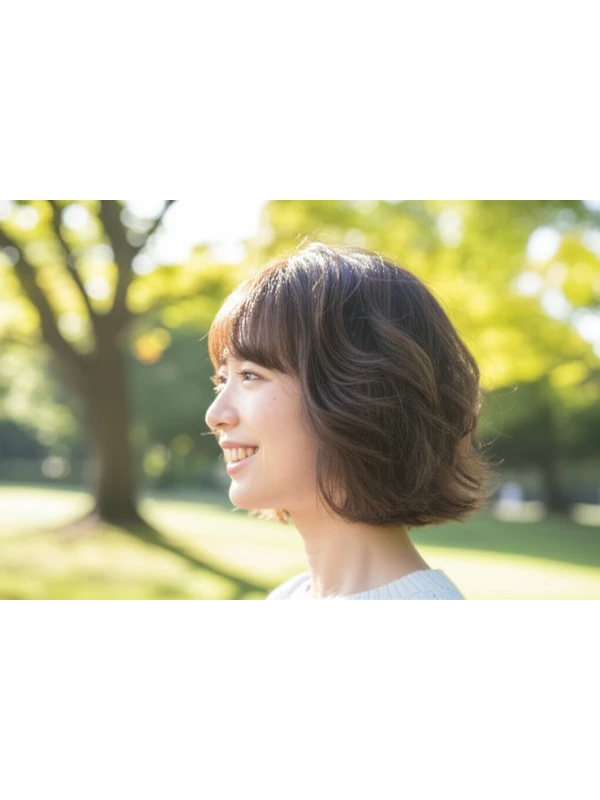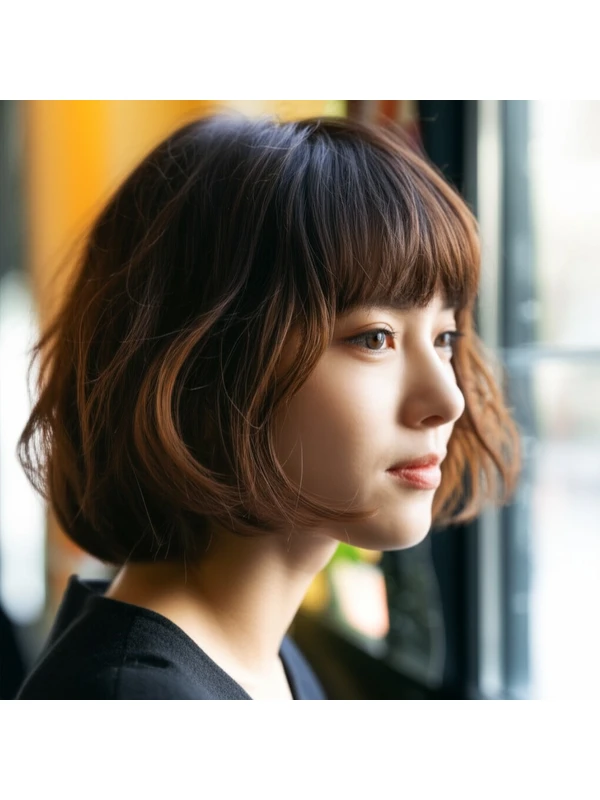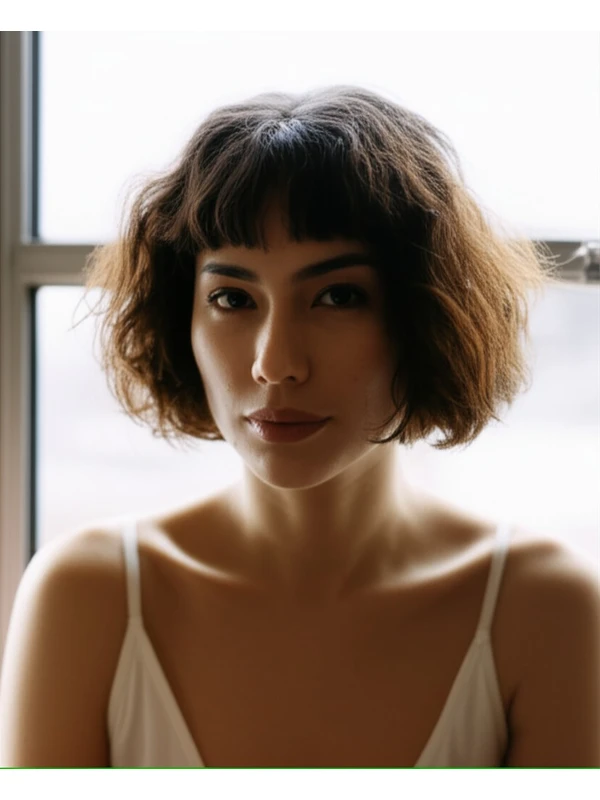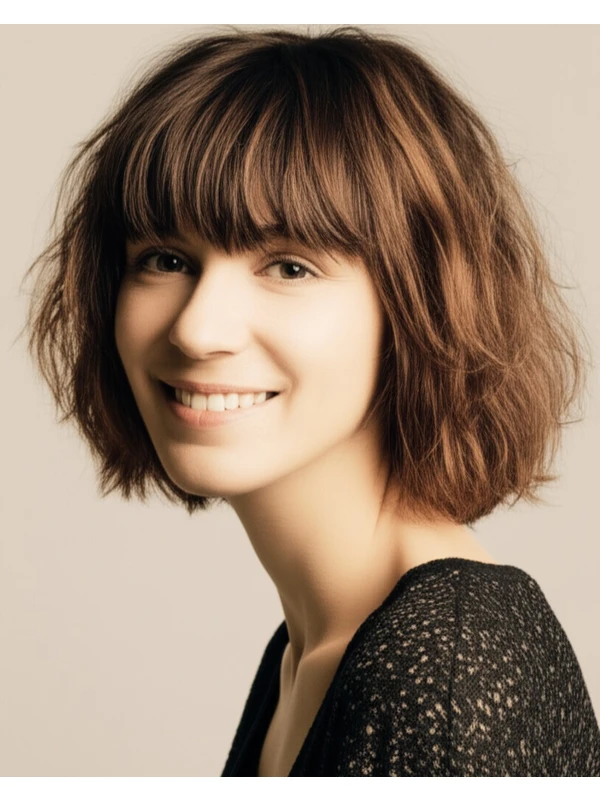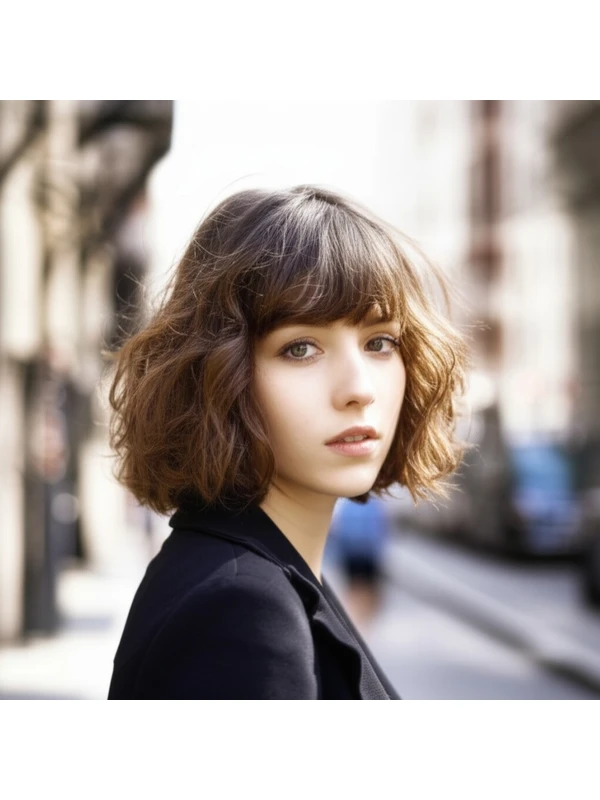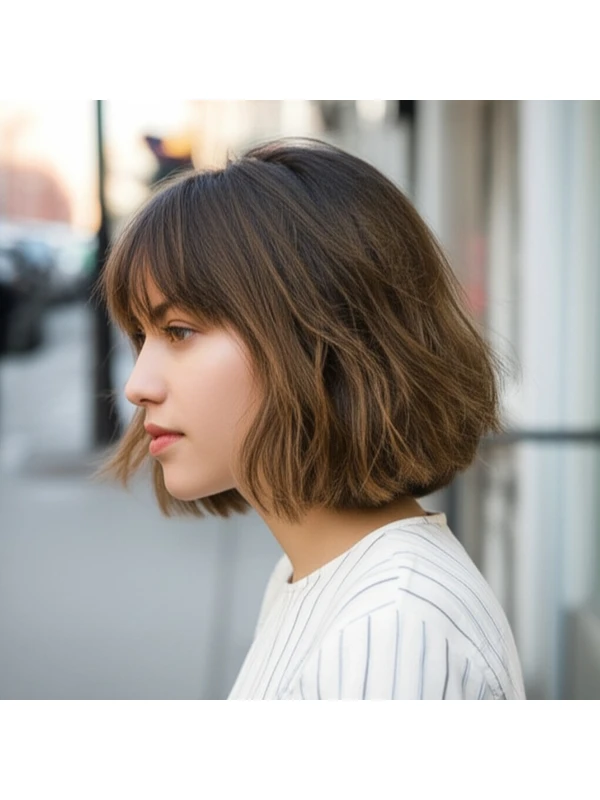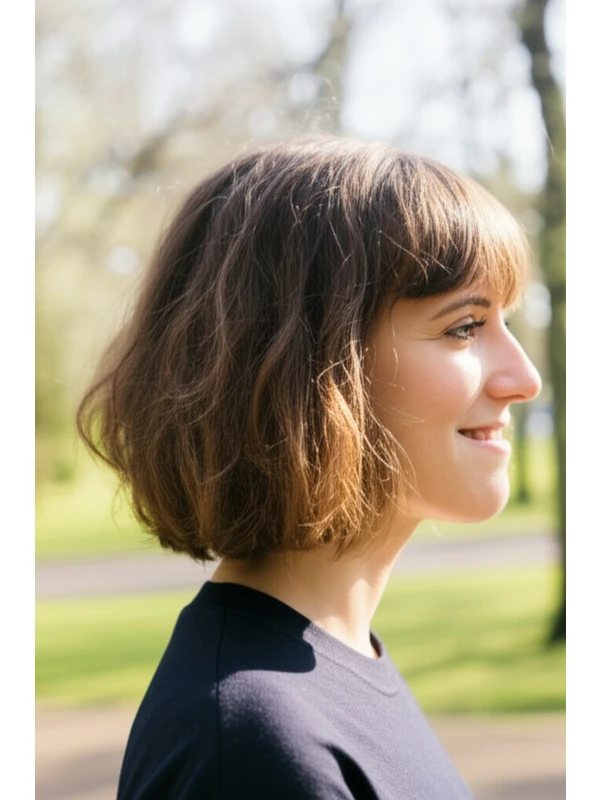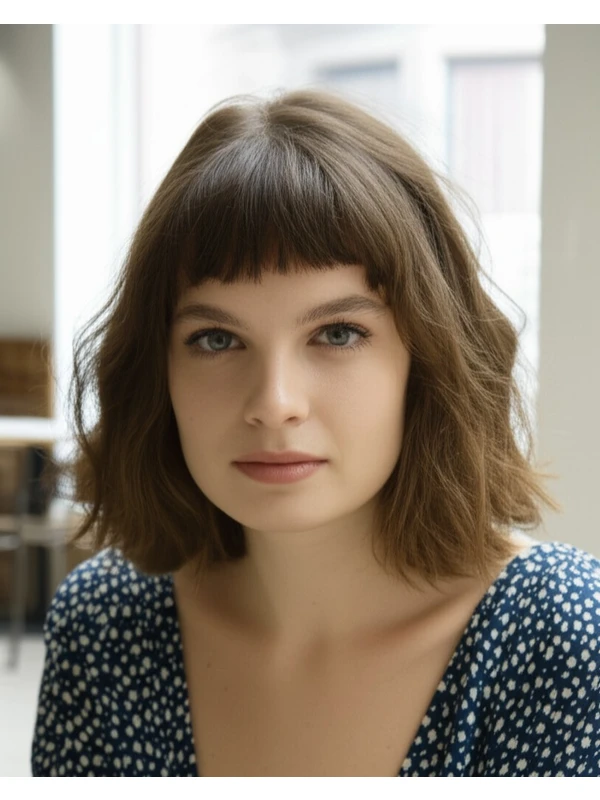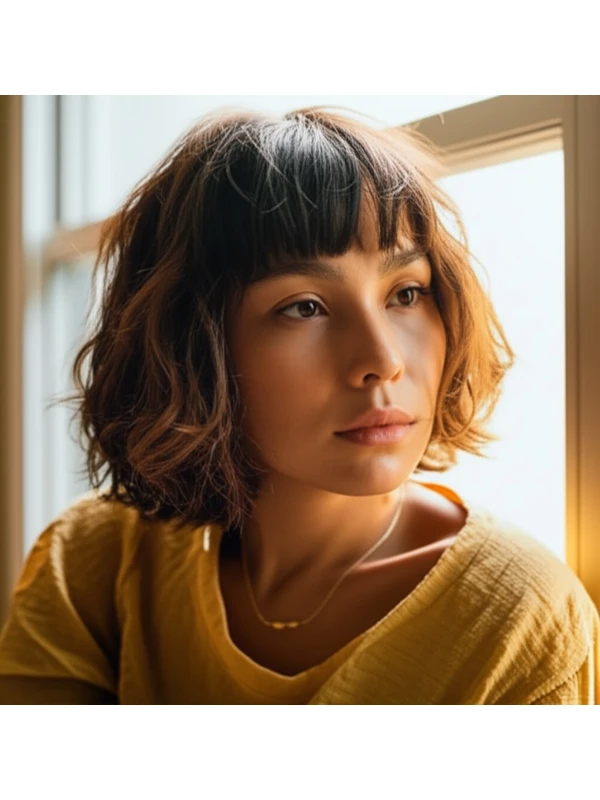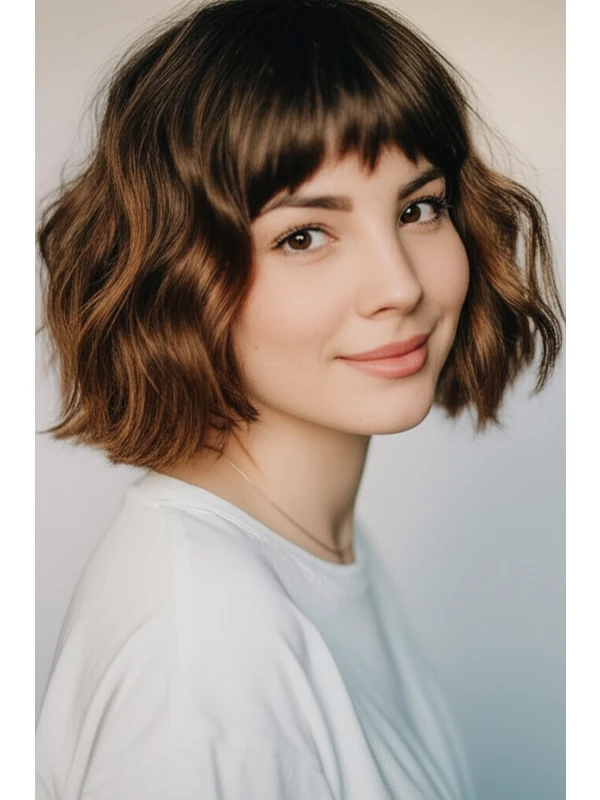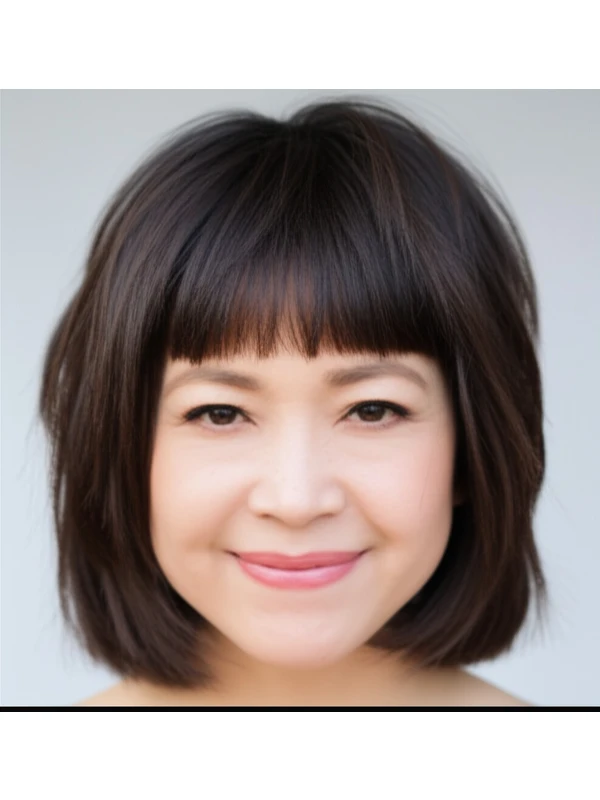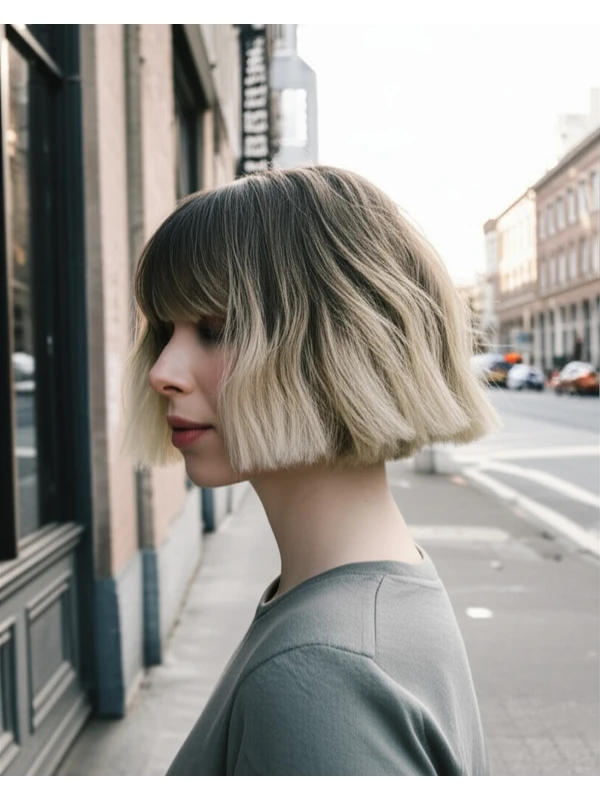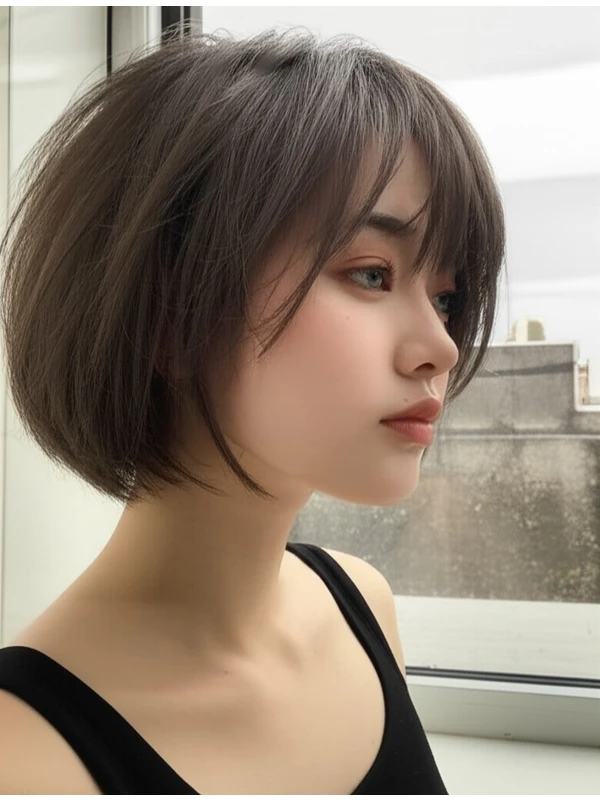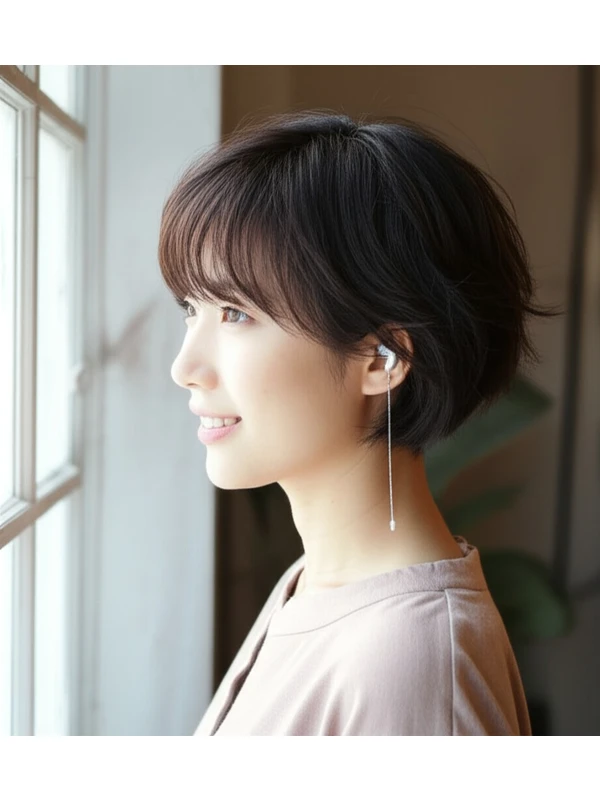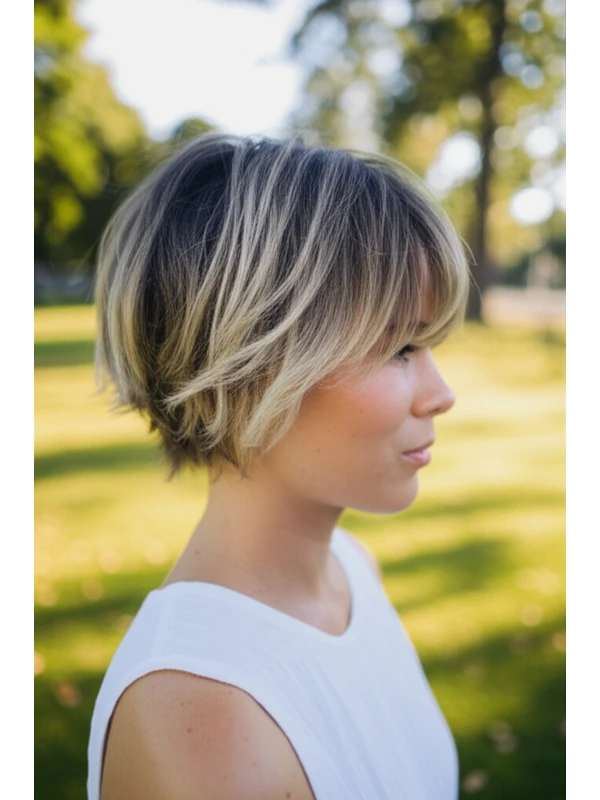#Micro Bangs: A Bold & Playful Style Guide
Micro bangs are having a moment! This ultra-short fringe is making waves for its playful vibe and ability to instantly refresh any hairstyle. But before you take the plunge, let's dive deep into everything you need to know about this trendy cut.
#1. Background & Definition: What Are Micro Bangs?
Micro bangs are a super short fringe, significantly shorter than traditional blunt or curtain bangs. Think of them as tiny, impactful wisps that frame your forehead.
- Cut Geometry: They're typically cut in a straight line across the forehead but can be slightly angled depending on face shape and personal preference. The key is their shortness – they barely graze the eyebrows, often sitting above or just at eyebrow level.
- Key Features: Boldness, youthfulness, high-impact style statement.
- Typical Length Ranges: Generally between ½ inch to 1 ½ inches long (about 1–4 cm). Shorter lengths are more dramatic!
- Alternative Names: Baby bangs, pixie bangs, mini bangs – all essentially refer to the same ultra-short fringe.
#2. Face Shape Fit: Finding Your Perfect Fringe
Micro bangs can be incredibly flattering on many face shapes, but adjustments might be needed for optimal balance.
- Oval Faces: Lucky you! Oval faces are generally considered the most versatile for micro bangs. The short length accentuates your features without disrupting symmetry. Fringe Option: Straight across or slightly angled.
- Round Faces: Micro bangs can help elongate a round face by drawing attention upwards. The key is to avoid overly soft, wispy versions that might accentuate width. Fringe Option: A more blunt, structured micro bang with some height at the center.
- Square Faces: Soften those angles! Micro bangs add softness and playfulness to a square jawline. Fringe Option: Slightly angled or textured to break up harsh lines. Avoid a very straight-across, severe cut.
- Heart Faces: A wider forehead can be balanced with micro bangs that draw attention away from the center of the face. Fringe Option: Angled or slightly off-center for asymmetry and balance.
- Diamond Faces: Micro bangs highlight your cheekbones and add width to a narrower chin. Fringe Option: A straight, blunt cut works well, or a slight point at the center can draw attention upward.
- Oblong/Long Faces: While micro bangs can work on long faces, be cautious! They can visually shorten the face further. If you have a longer face, consider slightly longer micro bangs (closer to 1 ½ inches) and avoid overly blunt cuts that emphasize length. Fringe Option: Slightly textured or side-swept for softness.
#3. Body Proportions & Height Guidance: Finding Your Silhouette Harmony
Micro bangs aren’t just about your face; they impact your overall silhouette too!
- Petite Frames: Shorter micro bangs can be particularly impactful on smaller frames, but avoid anything too short that overwhelms the face.
- Average Heights/Proportions: Most people will find micro bangs flattering regardless of height or shoulder width.
- Tall Individuals: Micro bangs add a playful touch to taller individuals and prevent hairstyles from looking too severe.
- Shoulder Width & Neck Length: For broad shoulders, consider slightly longer micro bangs (closer to 1 ½ inches) for balance. If you have a short neck, avoid super blunt cuts that can make your neck appear even shorter; angling the fringe helps create an illusion of length. Longer necks generally suit any micro bang length.
#4. Works Best With Hair Types & Densities: A Texture Breakdown
Micro bangs aren't one-size-fits-all! Here’s how they play with different hair types and densities.
- Straight Hair: Micro bangs are incredibly easy to style on straight hair – sleek, textured, or somewhere in between!
- Wavy Hair: A little extra effort is needed to control wave patterns within the fringe, but it's totally achievable. Point-cutting (removing small sections of length) helps soften the edges and prevent a blunt look.
- Curly/Coily Hair: Micro bangs can work on curly and coily hair! However, shrinkage needs serious consideration. What looks like ½ inch in the salon might end up being much shorter once dry. Consult with a stylist experienced in cutting textured hair.
- Shrinkage Factor: Expect 2-4 inches of shrinkage depending on curl pattern. Communicate this to your stylist!
- Fine Hair: Micro bangs can add volume and interest, but avoid overly thick or blunt cuts that might make fine hair look even thinner.
- Medium/Thick Hair: Micro bangs work well with medium to thick hair – the density provides structure and hold.
- Density Tips: If you have thin density overall, a slightly more blended fringe can create an illusion of fullness.
#5. Styling Variations: From Casual Cool to Evening Glamour
The beauty of micro bangs lies in their versatility!
- Sleek vs. Textured: Sleek styles use heat and smoothing products for a polished look. Texturized versions embrace natural texture with minimal styling.
- Middle vs. Side Part: A middle part creates symmetry, while a side part adds softness and asymmetry.
- Fringe Variations: Blunt, angled, wispy – experiment to find what suits your face shape best!
- Occasion Styling:
- Casual: Air-dried with a touch of texturizing spray.
- Office: Sleeked down with a flat iron and serum for a polished look.
- Evening: Styled up or to the side, revealing forehead space for a dramatic effect.
#6. Maintenance: Keeping Your Fringe Fresh
Micro bangs require more frequent trims than longer styles!
- Trim Cadence: Every 2-4 weeks is typical, depending on how quickly your hair grows and your desired length.
- At-Home Routine: Gentle cleansing, moisturizing (especially important for textured hair), and minimal heat styling are key.
- Heat vs Air-Dry: Air drying preserves natural texture. Heat styling requires a protectant spray to prevent damage.
- Product Checklist:
- Shampoo & Conditioner: For your hair type.
- Leave-In Conditioner: Especially for wavy, curly, or coily hair.
- Styler: Mousse, gel, pomade – depending on desired texture and hold.
- Finishing Spray: For hold and shine (optional).
- Estimated Daily Styling Time: 5–15 minutes, depending on styling complexity.
#7. Grow-Out Roadmap: The Evolution of Your Fringe
Micro bangs don't just disappear; they evolve!
- Months 1-3: The fringe will start to graze your eyebrows more prominently. Maintain regular trims to keep the shape crisp.
- Months 3-6: The length begins to soften and blend into the rest of your hair. Consider a slightly longer, angled fringe for a softer transition.
- Maintaining Shape: Between cuts, use dry shampoo to absorb oil and prevent flatness.
#8. Color Pairings: Elevating Your Look
Color can enhance micro bangs!
- Shades that Elevate: Face-framing highlights or balayage can add dimension and brightness around the fringe.
- Cool vs Warm Undertones: Cool tones (ash, silver) create a modern, edgy look. Warm tones (golden, honey) provide warmth and softness.
- Low-Commitment Options: Temporary root touch-ups or glosses are great for experimenting with color without permanent changes.
#9. Season & Occasion Guide: Styling Through the Year
Adapt your micro bangs to suit the season!
- Spring/Summer: Embrace a breezy, textured look with minimal styling products.
- Fall/Winter: Sleeked styles and deeper colors create warmth and sophistication.
- Work: Polished and professional – consider a side-swept fringe or sleek style.
- Weddings/Parties: Experiment with updo’s that reveal the micro bangs for a playful, stylish look.
#10. Cost & Time: Salon Estimates
Micro bangs are generally quick to cut but can vary based on salon and stylist experience.
- Salon Time: 30-60 minutes
- Price Range: Slightly more than a basic trim (expect higher end of the spectrum).
#11. Pros & Cons: Weighing Your Options
Pros:
- Instant style update
- Youthful and playful
- Works with many hair types
- Versatile styling options
Cons:
- Requires frequent trims
- Can be high-maintenance for textured hair
- Not universally flattering (face shape consideration is key)
#12. Salon Consultation Script: Questions to Ask Your Stylist
Prepare for your appointment! Use these questions as a guide:
- "I'm interested in micro bangs. What length do you recommend based on my face shape and hair texture?"
- "How will the fringe interact with my natural curl pattern/wave?" (For textured hair)
- “Can we discuss how to style this at home, considering my skill level?”
- "What products would you suggest for maintaining the shape and health of the fringe?"
#FAQs: Your Burning Questions Answered
- Are micro bangs suitable for all ages? Absolutely! While they have a youthful vibe, they can be adapted to suit any age group with adjustments in length and styling.
- Can I get micro bangs if I have very thick hair? Yes, but the stylist may need to thin out the fringe slightly to prevent it from looking too bulky.
- What if my bangs start growing out unevenly? Regular trims are essential! Don’t wait until they become a major problem – address small inconsistencies quickly.
- Can I style micro bangs upwards without them falling flat? Yes, with the right products (mousse, hairspray) and potentially some teasing at the root for extra volume.
- Will micro bangs make my forehead look smaller? They can create an illusion of a slightly smaller forehead by drawing attention to your eyes and cheekbones.
- How do I prevent my micro bangs from looking greasy? Use dry shampoo between washes, avoid touching them frequently, and consider a clarifying shampoo occasionally.
